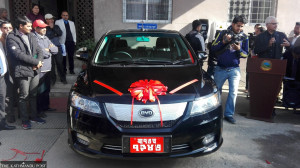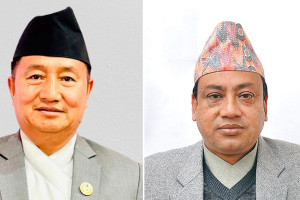Opinion
Rise of a city
Infrastructure, remittance, new ideas and tourism have all spurred Pokhara onto the path of development
Jagannath Adhikari
The rapid pace of economic change in Pokhara has been quite surprising. In just a half century, Pokhara has gone from among the poorest urban areas to one of the most prosperous and poverty-free cities in the country. An analysis of how this change has come about is important to understand the possible ways to reduce poverty and pursue development. But we should also be cognizant of the fact that geography plays a specific role and it cannot be the same in every place. Nevertheless, there are lessons to learn from Pokhara’s development.
Pokhara then
It is interesting to note how poor and disadvantaged Pokhara was, even until the mid 1970s. Tatsuro Fujikura’s small note on Pokhara in his book Discourse of awareness: Development, social movements and practices of freedom in Nepal, published by Martin Chautari, gives a hint of this. Tatsuro’s writing is based on the work of Paul W Rose, the first American advisor for community development in the early 1950s, and E Mihaley, a researcher on Nepal’s political economy in the early 1960s: “Rose spent his first six weeks (in January 1952) in Nepal investigating conditions in the Kathmandu and Pokhara valleys. In particular, the poverty and backwardness of Pokhara affected him profoundly.” Of this experience, Rose wrote, “I left Pokhara with a feeling that time had been moving slowly here for centuries, but people were aching for change”.
This was not surprising because I grew up in Pokhara in the 1960s and 1970s. Elderly people would often relate the harsh conditions they had had to face: “In some years, adult men had a difficult time carrying all dead bodies to the Seti River for cremation as there were so many deaths in the villages”. The conditions might have improved since the 1950s but it was still bad until the mid 1970s. Some of our lecturers told us that the general socio-economic condition of their villages (for example, in Tanahu, which was not connected by road then) was far better than in Pokhara. Until the late 1960s, people in the villages around Pokhara considered city residents as unlucky, even hesitating to betroth their daughters to Pokhara residents. Village people would say, “Pokhara is hot and
humid, malarial, lacking cool and tasteful water and there is difficulty in getting fodder and firewood”. This clearly shows that Pokhara had an agrarian life but in addition to being an inhospitable place to live, it did not have facilities sufficient for running this type of life.
Pokhara now
More recently, in 2011, Pokhara sub-metropolitan city was considered the most prosperous among 58 municipalities of the country with a poverty rate of 1.3 percent, according to the Small Area Estimates of Poverty 2011 published by the Central Bureau of Statistics. This analysis of prosperity was based on different indicators like consumption, remittance income and production. Thus, Kaski district has overtaken Kathmandu in terms of prosperity in the last 10 years. Until 2001, Kathmandu had always topped this list.
What caused Pokhara to take such a leap on various economic indicators? There are certainly a host of factors for this and it is difficult to objectively analyse the contribution of each factor. But in general, the availability of social and physical infrastructure, the increased flow of remittance, exposure to outside world, development of knowledge and skill and tourism are the main factors. Together, these have led to development of enterprises, creating local employment and income opportunities.
Secrets of success
Pokhara’s connection to trade centres in the north and south and the expansion of the road network linking the hinterlands have further helped in the flourishing of enterprises. In the last 20 years, the accessible hinterlands of Pokhara have established a significant number of enterprises. Until 1990, when there was no road connection, there was no such development and the village economy was largely based on local production and some remittance. Now, the same locations have enterprises like dairies, medium-scale cattle farms, vegetable farms and greenhouses, large-scale poultry production, cement-block factories and the like. Vehicles are increasingly used to transport such products to Pokhara. These enterprises have created local employment—at least for family members and a few casual opportunities for others, which are mostly undertaken by the poorer people, and thus helping to some extent in increasing their income.
Pokhara itself has comparatively many enterprises, thanks to tourism and remittance income. The whole of west-central Nepal has been receiving large amounts of remittance for long—especially from those in the Indian and British armies. But now, this region sends more people to countries where remuneration is comparatively higher. The remittances coming to this region eventually flow into Pokhara and much is used in enterprises.
Tourism and labour migration to foreign countries have also helped bring in new ideas for enterprises and for improving living conditions. In one instance, it was surprising to learn that German tourists had helped a few eateries convert to organic restaurants as early as the 1970s, a period when this concept was not very fashionable. Many retired British and Indian army personnel also introduced new concepts, whether in hospitality, sports, farming or non-farm enterprises. Infrastructures related to health and education helped improve access to these facilities even though it remains expensive to get quality services. Still, having such facilities was a crucial matter to attract investors, who then provided employment and income opportunities for others.
There could be many other factors that helped Pokhara improve its economic and social condition. Further exploration of these factors and how they operated could shed more light on how this type of development could be pursued in other places too.
Adhikari is a social scientist researching various aspects of development




 26.37°C Kathmandu
26.37°C Kathmandu












